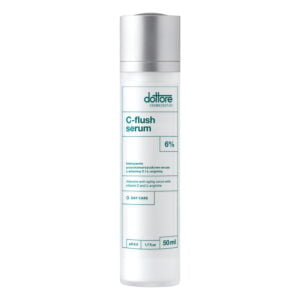Astaxanthin – the queen of antioxidants
What is the reason for astaxanthin’s popularity? Read the article to learn more about the properties and uses of this remarkable antioxidant.
Spis treści
Astaxanthin – what is it?
Astaxanthin is gaining popularity as a dietary supplement and as an active ingredient in cosmetics. It is a carotenoid – it belongs to a group of organic chemical compounds, derivatives of unsaturated hydrocarbons.
The astaxanthin molecule is similar to that of beta-carotene. Slight differences in structure result in different chemical and biological properties of the two substances. Both are antioxidants, but of all antioxidants, it is astaxanthin that has the strongest antioxidant properties. It quenches singlet oxygen (without unpaired electrons) and fights free radicals.
The antioxidanteffect of astaxanthin is 54 times stronger than that of beta-carotene, 65 times stronger than the effect of vitamin C, and 500 times more active than that of vitamin E and coenzyme Q10. This ingredient effectively protects the skin from free radicals and counteracts oxidative stress.
Antioxidants vs. free radicals
Every organism strives for a state of internal balance. This is closely related to processes at the cellular level. Oxygen free radicals, czyli or reactive oxygen forms, attack other atoms and destroy the stability of chemical compounds. As a result, cellular structures are damaged. The negative impact of free radicals extends to the skin.
Fortunately, the body has developed a defense system in the form of antioxidants. These are chemical compounds capable of neutralizing free radicals in the body. Thanks to them, degradation of structures – including skin – is blocked. Antioxidants make the body recover at the cellular level.
Astaxanthin, as a powerful antioxidant, has a very high ability to neutralize free radicals and restore balance to the body.
We wrote more about antioxidation in the article on ferulic xpress. The essential ingredients in this non-invasive cosmetic treatment are natural astaxanthin and ferulic acid.
What is oxidative stress
If there are too few antioxidants in the body, free radicals multiply rapidly. The process is accelerated by external factorssuch as sunlight, the impact of environmental pollutants and an unhealthy lifestyle. An imbalance between free radicals and antioxidants is oxidative stress. Symptoms of this condition become apparent on the skin by:
- weakening of the hydrolipidic layer,
- reduced elasticity of the epidermis,
- acceleration of the aging process (e.g., an increase in the number of wrinkles),
- increasing inflammatory reactions,
- exacerbation of skin diseases.
All this makes it extremely important to fight free radicals with antioxidants such as astaxanthin.
Where astaxanthin occurs
This powerful antioxidant in its natural form is found in the algae Haematococcus pluvialis. Smaller amounts of astaxanthin are also present in fish and shellfish, as well as in some microorganisms and fungi.
Under laboratory conditions, astaxanthin can be produced by chemical synthesis.
How to take astaxanthin and other antioxidants
It’s important to provide your body with antioxidants every day. It’s worth taking antioxidants primarily along with food. A diet rich invitamins A, C and E,carotenoids, bioflavonoids, zinc, selenium, lutein, lycopeneis important. Antioxidants are found among others in green tea, broccoli, kale, spinach, grapefruit, currants, peppers, cabbage, parsley.
Dietary supplements, including those with astaxanthin, are becoming increasingly popular. Supplementation allows supplementation of antioxidant levels in a controlled manner, but it cannot replace a nutritious diet.
Also, do not forget to use cosmetics with antioxidants. Care with antioxidation in mind will bring relatively quick and well visible results, for example, in the case of symptoms of oxidative stress. When choosing a cream, serum or treatment, it is worth paying attention to the content of astaxanthin, ferulic acid, vitamin C and vitamin A.
-
 Retino Forte319,00 zł
Retino Forte319,00 zł -
 Ferulic antiox cream309,00 zł
Ferulic antiox cream309,00 zł -
 C-flush serum339,00 zł
C-flush serum339,00 zł
Effects of astaxanthin on the skin
Astaxanthin is an antioxidant with comprehensive beneficial properties for the skin. It exhibits high anti-inflammatory activity, strengthens skin immunity and improves its overall condition. By fighting free radicals, it counteracts premature aging of the skin. It prevents wrinkles and loss of skin firmness. In addition, it protects the skin from the inside against the effects of ultraviolet radiation. It is called an internal sunscreen.
With the use of astaxanthin, it is possible to increase the level of skin hydration. Indirect stimulation of collagen and elastin production, caused by the action of this ingredient, results in increased skin elasticity. The substance’s ability to inhibit melanin prevents discoloration and evens out skin tone.
Other properties of astaxanthin
Astaxanthin is widely used not only in cosmetics. Due to its color, the substance is used as a purple food dye. In the form of a dietary supplement, it is taken by athletes and lovers of active lifestyles. Physical exertion increases free radicals, and astaxanthin is, after all, an effective neutralizer of them. It also has an anti-inflammatory effect, so it can reduce training-related pain. In addition, the substance accelerates the body’s recovery and participates in fat burning – it improves the metabolism of fatty acids.
The potential of astaxanthin is still being investigated. It is said to have such properties as:
- strengthening the body’s immunity;
- beneficial effects on the nervous system and on memory processes;
- cardiovascular protection;
- mood improvement, possible antidepressant effect;
- supporting the work of the organ of sight;
- counteracting the complications of diabetes;
- anti-cancer effects.




No Comments